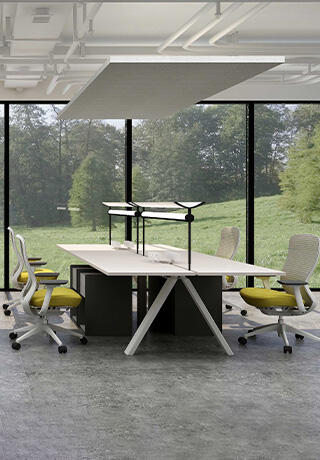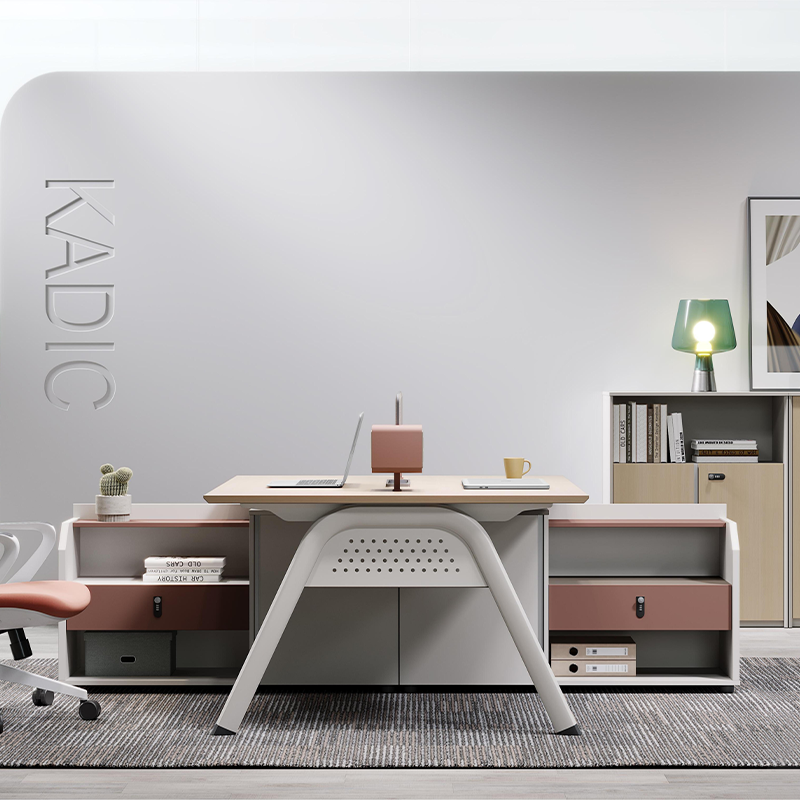Introduction to Partition Walls in Office Design
The modern office environment has undergone significant changes in recent years, shifting away from traditional closed cubicles and fixed layouts to more flexible and collaborative spaces. One of the most effective tools in achieving this balance between openness and functionality is the use of Partition Walls. Far from being mere dividers, Partition Walls play an important role in defining spaces, controlling acoustics, supporting branding, and fostering productivity. They allow organizations to strike the right balance between collaboration and privacy, offering employees an environment that adapts to diverse work styles and company cultures.
The Role of Partition Walls in Space Definition
Creating Structure in Open Layouts
Open-plan offices are popular for promoting collaboration, but they often lack structure. Partition Walls provide a way to define zones within large spaces without resorting to permanent construction. They create meeting areas, private workstations, and breakout zones that give employees clarity and functionality in how spaces are used.
Flexibility and Adaptability
Unlike permanent walls, Partition Walls are designed to be flexible. They can be reconfigured or relocated as office needs evolve. This adaptability is essential for companies that experience growth, reorganizations, or hybrid work models that require shifting layouts.
Balancing Privacy and Collaboration
One of the biggest challenges in office design is creating a space where employees can collaborate without sacrificing focus. Partition Walls achieve this balance by offering different levels of visibility and acoustic control. Glass walls maintain transparency and openness, while solid or acoustic panels provide more privacy.
Enhancing Flow and Wayfinding
Partition Walls help guide movement within an office. By subtly directing traffic and creating logical divisions, they make it easier for employees and visitors to navigate. Defined pathways also contribute to a sense of organization and flow throughout the workspace.

Types of Partition Walls and Their Functions
Glass Partition Walls
Glass has become a hallmark of modern office design. Glass Partition Walls allow natural light to spread throughout the office, reducing reliance on artificial lighting and improving employee well-being. Frosted or tinted options can increase privacy while maintaining openness. These walls are ideal for meeting rooms, executive offices, and collaborative areas where visibility supports transparency and teamwork.
Acoustic Partition Walls
Noise is a major concern in open offices. Acoustic Partition Walls are designed with sound-absorbing materials to minimize distractions. They create quieter zones that are essential for focused work, phone calls, or meetings. Acoustic walls can be mobile or fixed and are increasingly used in industries where concentration and confidentiality are priorities.
Movable Partition Walls
Movable walls offer ultimate flexibility by allowing spaces to be reconfigured quickly. They can slide, fold, or stack to convert a large conference room into smaller meeting rooms or open up a space for group events. Movable Partition Walls are particularly useful in offices that host frequent training sessions, workshops, or client events.
Wooden Partition Walls
Wooden designs bring warmth and sophistication to office spaces. They can be solid for full privacy or slatted for a blend of separation and openness. Wooden Partition Walls pair well with biophilic design concepts, integrating natural materials into the workplace to promote calmness and creativity.
Fabric or Modular Partition Walls
Lightweight fabric-covered panels or modular partitions are cost-effective and versatile. They are often used in cubicle systems or as temporary dividers. Their surfaces can be customized with colors and textures to complement branding or even function as pin boards for notes and visuals.
Green Partition Walls
Incorporating plants into Partition Walls is a growing trend. Green walls bring nature indoors, improving air quality and reducing stress. These living partitions not only divide spaces but also support employee wellness and sustainability goals.
Benefits of Partition Walls in Modern Offices
Improved Productivity
By reducing distractions and creating clearly defined spaces, Partition Walls help employees concentrate and perform tasks more effectively.
Better Collaboration
While offering privacy, many Partition Walls also encourage collaboration. Transparent and low-height dividers maintain visual connections and foster teamwork.
Enhanced Aesthetics
Partitions contribute significantly to the visual identity of an office. From sleek glass to textured fabric or wooden finishes, they enhance branding and create inviting environments.
Cost Savings
Partition Walls are a cost-effective alternative to permanent construction. They provide flexibility for future changes without the high costs of remodeling.
Sustainability
Many modern Partition Walls are made from recyclable or eco-friendly materials. They reduce the environmental footprint of office design while aligning with corporate sustainability initiatives.
Factors to Consider When Choosing Partition Walls
Office Layout and Size
The choice of Partition Walls depends on the size and layout of the office. Smaller spaces may benefit from glass to preserve openness, while larger spaces may incorporate movable or acoustic partitions to define functional zones.
Nature of Work
Different tasks require different environments. Creative and collaborative teams may prefer transparent partitions, while roles requiring concentration or confidentiality benefit from acoustic or solid walls.
Budget
Partition Walls range from cost-effective modular panels to premium glass or movable wall systems. Budget considerations play a significant role in selection.
Brand Identity
Partitions should align with the company’s brand image. A tech startup may choose sleek glass for a modern feel, while a law firm may opt for wood for a more traditional and professional atmosphere.
Flexibility Needs
For organizations anticipating growth or frequent changes in work style, movable and modular Partition Walls offer the flexibility to adapt quickly.
Future Trends in Partition Walls
As workplaces evolve, Partition Walls are incorporating new technologies and sustainable features. Expect to see smart partitions with integrated digital screens, soundproofing enhancements, and customizable lighting. Green designs featuring living plants will become more common as biophilic design continues to influence modern offices. Additionally, the demand for recyclable and eco-friendly materials will drive innovation in Partition Walls that balance functionality with environmental responsibility.
Conclusion
Partition Walls are an essential feature of modern office design, helping define spaces while maintaining flexibility, privacy, and collaboration. From glass and acoustic walls to movable, wooden, and green designs, each style offers unique advantages suited to different workplace needs. By improving productivity, enhancing aesthetics, and providing adaptability, Partition Walls transform open layouts into dynamic, efficient, and inspiring work environments. As offices continue to evolve to meet the demands of hybrid work and sustainability, the role of Partition Walls will only grow in importance.
FAQ
Why are Partition Walls important in offices?
They help define spaces, provide privacy, reduce noise, and improve the overall functionality and aesthetics of the workplace.
What types of Partition Walls are best for modern offices?
Glass, acoustic, movable, wooden, modular, and green Partition Walls are among the most popular choices.
Do Partition Walls improve productivity?
Yes, by reducing distractions and creating defined zones, they help employees focus and work more effectively.
Can Partition Walls be eco-friendly?
Yes, many are made from recyclable or sustainable materials, and green walls with plants promote environmental responsibility.
Are movable Partition Walls worth the investment?
Yes, they provide flexibility to adapt spaces for different uses, making them valuable for dynamic or growing companies.
Do glass Partition Walls provide privacy?
They offer visual openness but can be frosted or tinted for increased privacy while maintaining light flow.
What is the role of acoustic Partition Walls?
They reduce noise transfer, creating quieter spaces for concentration, meetings, or confidential work.
Can Partition Walls enhance branding?
Yes, with customized finishes, materials, and designs, partitions can reflect company culture and identity.
Are Partition Walls cost-effective compared to construction?
Yes, they are generally more affordable and flexible than permanent walls, making them a practical investment.
What trends are shaping the future of Partition Walls?
Smart technology integration, sustainable materials, and biophilic design are key trends in modern Partition Walls.
Table of Contents
- Introduction to Partition Walls in Office Design
- The Role of Partition Walls in Space Definition
- Types of Partition Walls and Their Functions
- Benefits of Partition Walls in Modern Offices
- Factors to Consider When Choosing Partition Walls
- Future Trends in Partition Walls
- Conclusion
-
FAQ
- Why are Partition Walls important in offices?
- What types of Partition Walls are best for modern offices?
- Do Partition Walls improve productivity?
- Can Partition Walls be eco-friendly?
- Are movable Partition Walls worth the investment?
- Do glass Partition Walls provide privacy?
- What is the role of acoustic Partition Walls?
- Can Partition Walls enhance branding?
- Are Partition Walls cost-effective compared to construction?
- What trends are shaping the future of Partition Walls?





